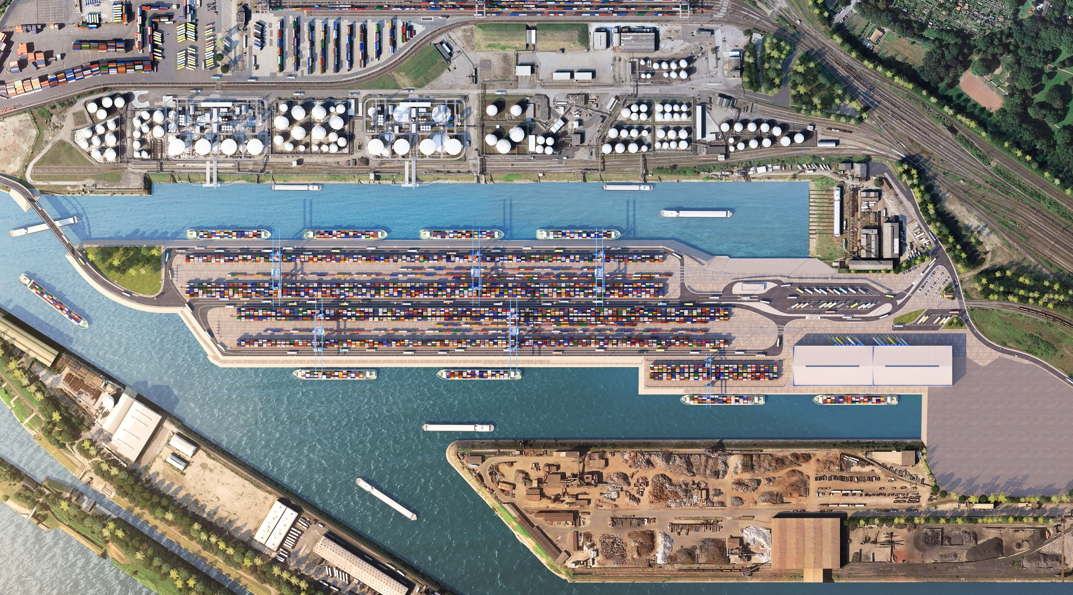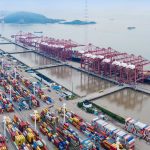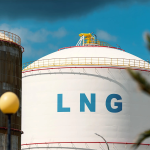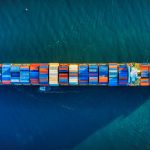On the site of the former Coal Island, Germany’s duisport is to construct the trimodal Duisburg Gateway Terminal (DGT) by 2023 together with Cosco Shipping Logistics, Hupac SA, and the HTS Group.
As informed, DGT is set to become the first terminal with completely climate-neutral operations using hydrogen, intelligent networking, and the ability to supply neighboring districts with energy.
In addition, it will be the largest container terminal in the European hinterland.
To implement the complete energy transformation of the world’s largest inland port, duisport and the Fraunhofer Institute for Environmental, Safety and Energy Technology UMSICHT have analyzed forward-looking technologies and developed customized models for Europe’s largest hinterland hub as part of the “enerPort” project.
In the follow-up project, “enerPort II”, the next step is now to install a sustainable energy system in the DGT that links renewable energies, energy storage, consumers, and various hydrogen technologies. Key components for this are fuel cell systems and hydrogen engines for power generation as well as battery storage.
“enerPort II” — the first implementation project on the Port of Duisburg’s hydrogen agenda
“In the Duisburg Gateway Terminal, our operations will not only be … digital and efficient but also 100 percent climate-neutral. The largest development project since ‘logport I’ 22 years ago is a model project with a resonance far beyond the Port of Duisburg. It shows what the logistics and energy supply of tomorrow will look like,” Markus Bangen, duisport CEO, said.
Other partners in the first hydrogen project to be implemented directly in the Port of Duisburg are Westenergie Netzservice GmbH, Rolls-Royce’s Power Systems business unit, Netze Duisburg GmbH, Stadtwerke Duisburg and Stadtwerke Duisburg Energiehandel GmbH.
The project is being funded by the German Federal Ministry of Economics and Climate Protection for a period of four years as part of the “Hydrogen Technology Offensive”.
Duisburg Gateway Terminal to be operated as self-sufficiently as possible
“Specifically, we will implement a sustainable, hydrogen-based energy concept that aims for a high level of self-sufficiency,” Alexander Garbar, Deputy Head of Corporate Development and Sustainability Manager at duisport, explained.
“An intelligent local energy network couples and controls renewable energies in the form of photovoltaic and hydrogen-based combined heat and power plants with electrical and thermal energy storage systems as well as hydrogen storage and consumers such as onshore power, charging stations and crane systems. A future supply of adjacent districts will also be considered on a theoretical basis.”
“Inland ports are special urban districts with their own energy requirements,” Anna Grevé, Head of the Electrochemical Energy Storage Department at Fraunhofer UMSICHT, said.
“They provide a home for both national and international freight transport as well as other industries and trades, and are also often located close to residential areas. As a consequence, their further development must meet economic requirements alongside climate and environmental protection requirements.”
Modular structure enables further follow-up projects
One special feature of the “enerPort II” project is its modular structure. This creates the conditions for an uninterrupted continuation of the transformation process, as follow-up or satellite projects can be integrated without any problems. For example, electrolyzers or hydrogen-powered locomotives.
“This will make the terminal the anchor point and nucleus for the transformation process of the entire Port of Duisburg,” Garbar added.
In the final stage, following two construction phases, a modal split is to be implemented at the DGT that provides for 40 percent transport by rail, 40 percent transport by inland waterway vessel – and only 20 percent road transport by truck. For this purpose, 240,000 square meters of terminal space will accommodate six gantry cranes, twelve block train tracks with a length of 730 meters, and several berths for inland waterway vessels.
Capacity for China trains grows to 100 units per week
Hydrogen-powered shunting locomotives are to be used at the DGT in the future. Otherwise, there are no reach stackers — all goods movements are controlled digitally. An onshore power connection is available for each barge at the dock to minimize greenhouse gas emissions.
The new large-scale terminal is already considered as a test field and model for climate-neutral inland ports worldwide. The DGT will also bolster duisport’s handling capacity, with China trains increasing to up to 100 units per week, for example.
enerPort II is the follow-up project to enerPort I. The aim of the project was to investigate where inland ports can be supported in their energy transformation. The outcome is a method that combines, optimizes and evaluates various energy plants and Power-to-X technologies.
Source: Offshore Energy






